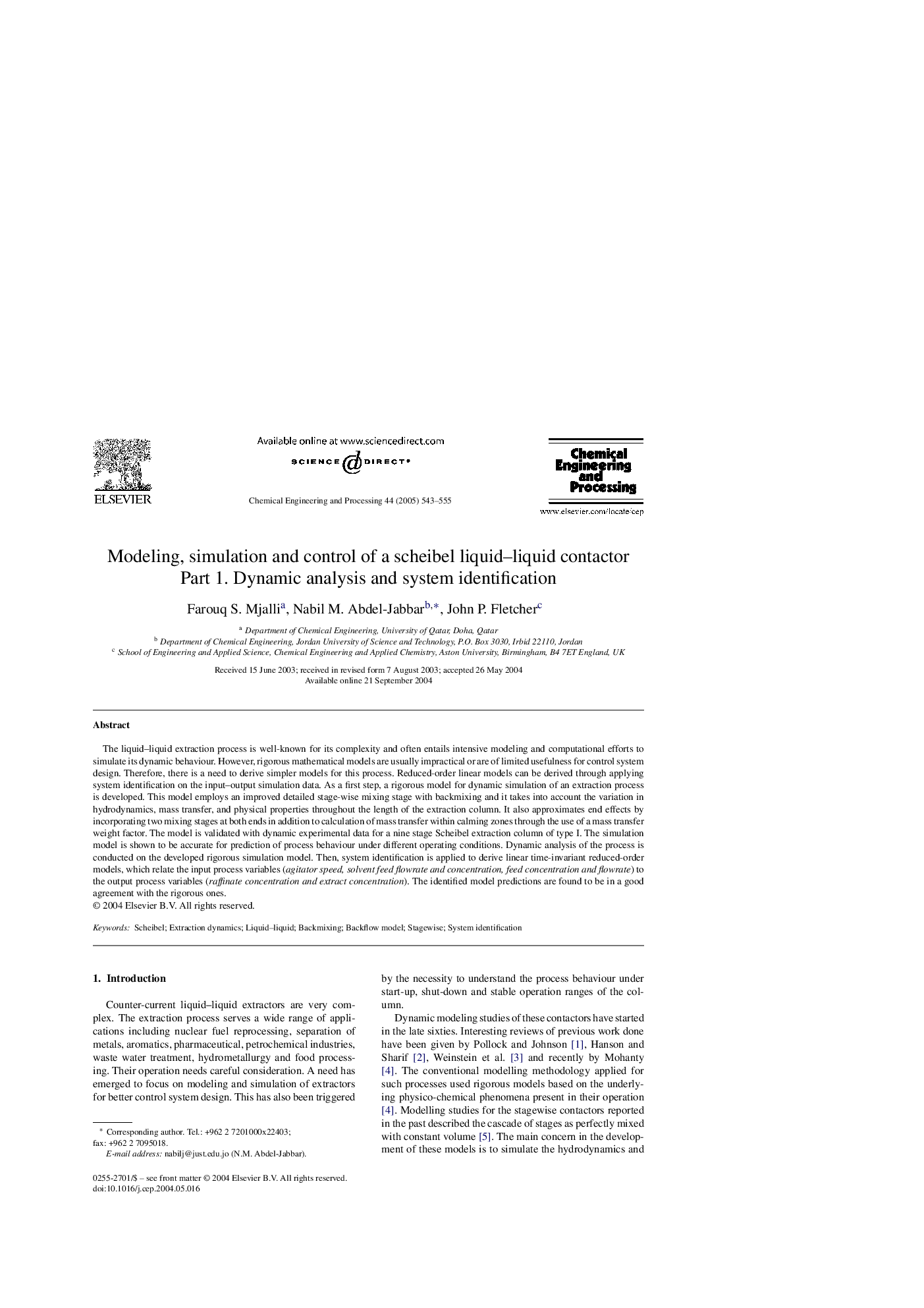| Article ID | Journal | Published Year | Pages | File Type |
|---|---|---|---|---|
| 10397098 | Chemical Engineering and Processing: Process Intensification | 2005 | 13 Pages |
Abstract
The liquid-liquid extraction process is well-known for its complexity and often entails intensive modeling and computational efforts to simulate its dynamic behaviour. However, rigorous mathematical models are usually impractical or are of limited usefulness for control system design. Therefore, there is a need to derive simpler models for this process. Reduced-order linear models can be derived through applying system identification on the input-output simulation data. As a first step, a rigorous model for dynamic simulation of an extraction process is developed. This model employs an improved detailed stage-wise mixing stage with backmixing and it takes into account the variation in hydrodynamics, mass transfer, and physical properties throughout the length of the extraction column. It also approximates end effects by incorporating two mixing stages at both ends in addition to calculation of mass transfer within calming zones through the use of a mass transfer weight factor. The model is validated with dynamic experimental data for a nine stage Scheibel extraction column of type I. The simulation model is shown to be accurate for prediction of process behaviour under different operating conditions. Dynamic analysis of the process is conducted on the developed rigorous simulation model. Then, system identification is applied to derive linear time-invariant reduced-order models, which relate the input process variables (agitator speed, solvent feed flowrate and concentration, feed concentration and flowrate) to the output process variables (raffinate concentration and extract concentration). The identified model predictions are found to be in a good agreement with the rigorous ones.
Related Topics
Physical Sciences and Engineering
Chemical Engineering
Process Chemistry and Technology
Authors
Farouq S. Mjalli, Nabil M. Abdel-Jabbar, John P. Fletcher,
